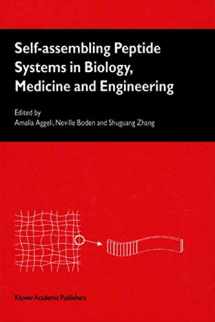
Self-Assembling Peptide Systems in Biology, Medicine and Engineering
Book details
Summary
Description
One ofthe major drivers in biological research is the establishment ofstructures and functions of the 50,000 or so proteins in our bodies. Each has a characteristic- dimensional structure, highly "ordered" yet "disordered"! This structure is essential for a protein's function and, significantly, it must be sustained in the competitive and complex environment of the living cell. It is now being recognised that when a cell loses control, proteins can se- assemble into more complex supermolecular structures such as the amyloid fibres and plaques associated with the pathogenesis of prion (CJD) or age-related (Alzheimer's) diseases. This is a pointer to the wider significance of the self-assembling properties of polypeptides. It has been long known that, in silk, polypeptides are assembled into- sheet structures which impart on the material its highly exploitable properties of flexibility combined with high tensile strength. But only now emerging is the recognition that peptides can Self-assemble into a wide variety of non-protein-like structures, including fibrils, fibres, tubules, sheets and monolayers. These are exciting observations and, more so, the potential for materials and medical exploitations is so wide ranging that over 80 scientists from Europe, USA, Japan and Israel. met 1-6 July 1999 in Crete, to discuss the wide-ranging implications of these novel developments. There was a spirit of excitement about the workshop indicative of an important new endeavor. The emerging perception is that of a new class of materials set to become commercially viable early in the 21st century.


We would LOVE it if you could help us and other readers by reviewing the book
Book review



